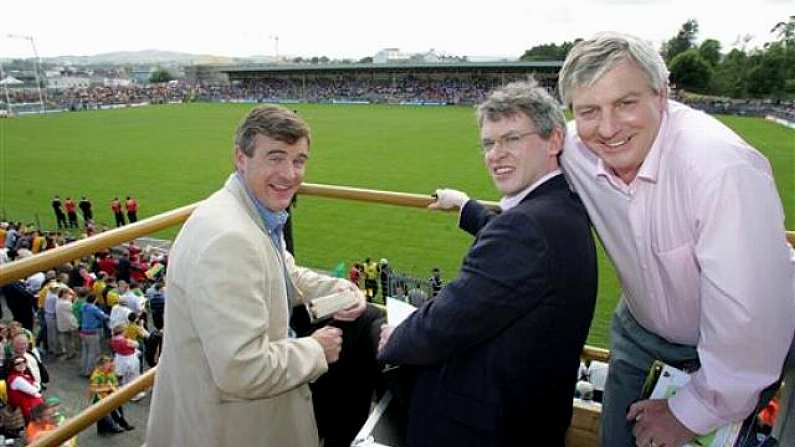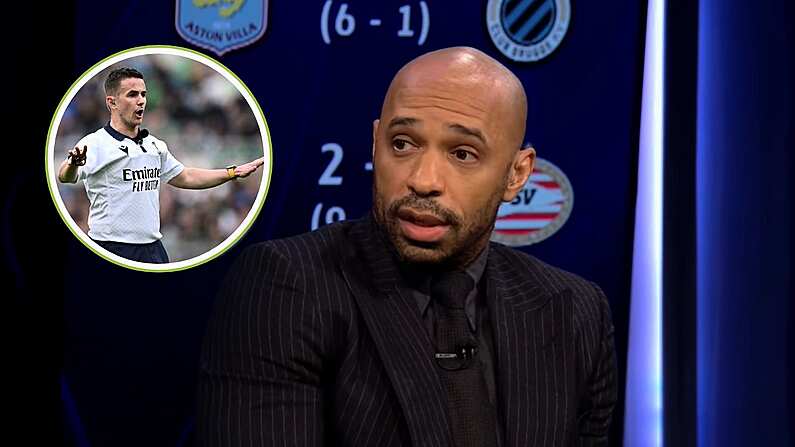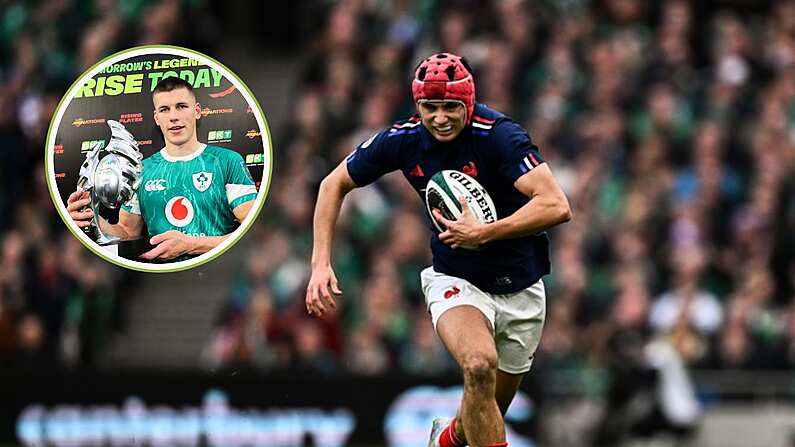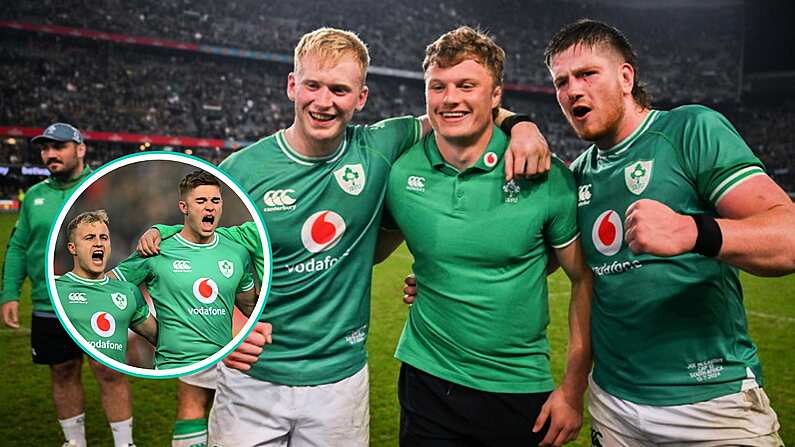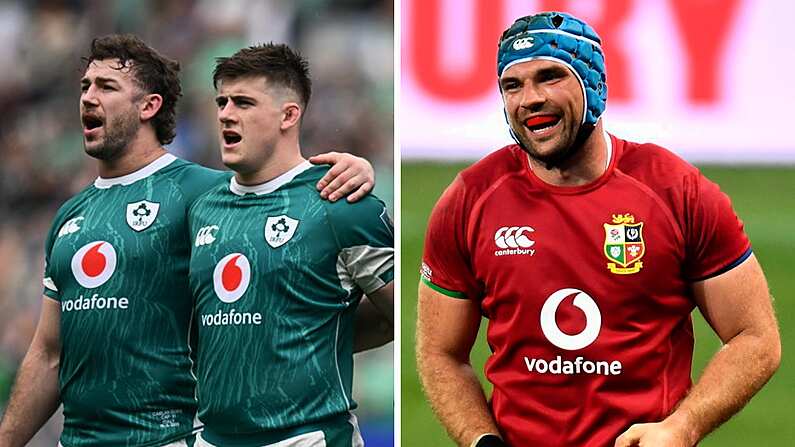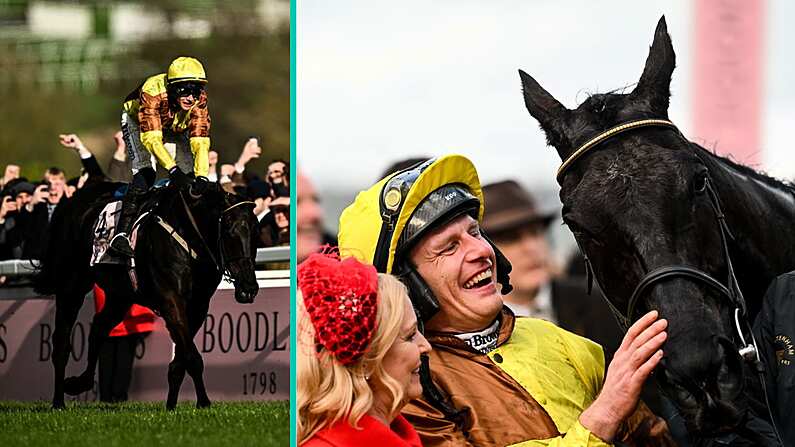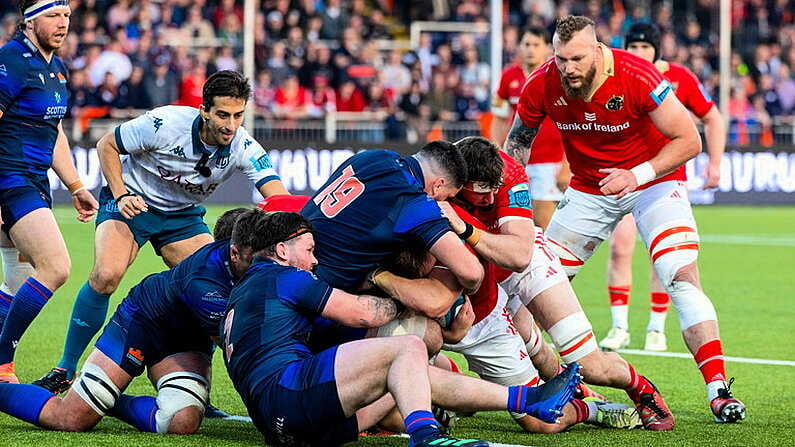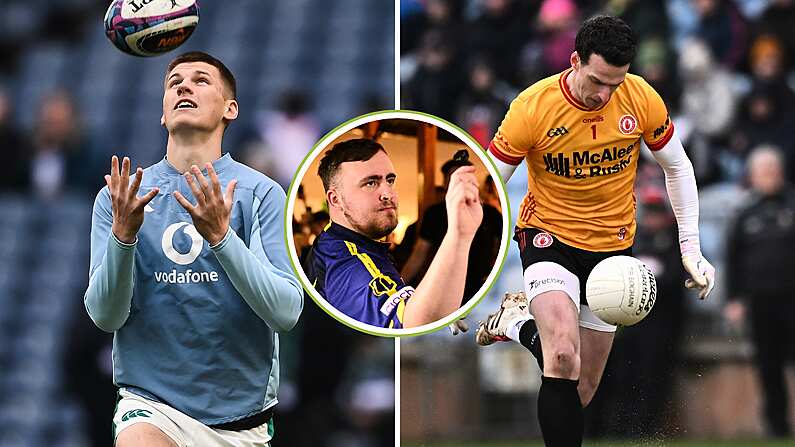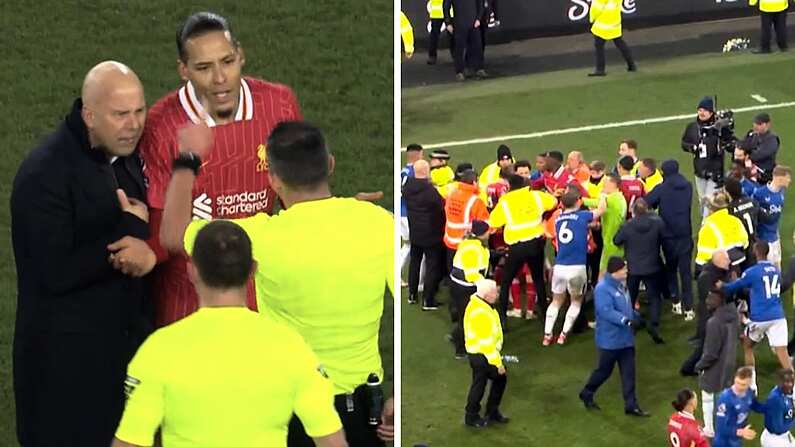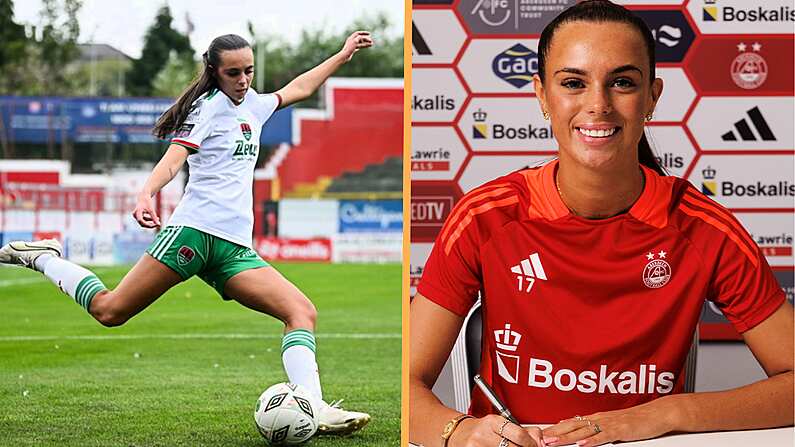It's anticipated that the GAA's new TV deals will be worth €55 million over the next five years. It's difficult to credit now but the GAA used to be intensely wary of televised matches.
The older heads within the hierarchy feared that live games would hit attendances. This pessimistic view was not unique to GAA officials, and nor has it entirely gone out of fashion. Only a few years before, the English Football League chairman were convinced that live matches on ITV were hurting crowds.
Therefore, prior to 1995, RTE typically screened only five live matches every year. Namely, the two All-Ireland finals, both All-Ireland football semi-finals, and the All-Ireland hurling semi-final that didn't involve the Ulster team.
In the 1980s and into the early 1990s, television coverage of provincial games, even provincial finals, was restricted to the highlights package on the Sunday Game in the evening.
Michael Lyster and lead analyst Enda Colleran used to get helicopters to and from games, courtesy of Conor Haughey's company 'Celtic Helicopters'. As soon as the game was over, they'd be zoomed back to Donnybrook along with the tape of the game.
The concept of the live provincial championship was entirely new. While 1995 was the first year that the national broadcaster committed to showing a series of such games, there been the occasional match screened live before. Lyster told Balls.ie this summer that he seemed to remember one Connacht Final in the late 70s being transmitted live. But these tended to be isolated events and were experimental in nature.
RTE's exclusive right to even the paltry number of the live games they had did not go unchallenged. In early 1992, London production company Chrysalis offered the GAA £5 million over five years in exchange for exclusive rights to championship matches. At that time, RTE had no hope of matching such a figure.
Chrysalis were the production company behind Channel 4's extremely popular Football Italia series fronted by James Richardson, which would ultimately premiere that autumn.
Channel 4 had a reputation for bringing exotic and foreign sports onto UK television. Not only was their American football coverage in the 1980s wildly successful, they also transmitted rather more niche sports like Kabbadi and chess.
And they had been responsible for bringing the All-Ireland finals to British audiences for a time before 1992. Ironically, it was the arrival of Football Italia which brought an end to this arrangement.
Ultimately, as Donal Keenan wrote in the Irish Independent, there was still a desire within a GAA to work with a native broadcaster, regardless of the financial hit.
There is a strong body of opinion in the GAA which supports granting the rights to the national broadcasting station, even if they do not gain financially from such an agreement.
While Chrysalis and Channel 4 didn't get exclusive rights to games, they did sign an agreement in 1993 to screen a highlights package on Saturday mornings. This would stand in place of Gazzetta Football Italia in the summer months.
PRO Danny Lynch disclosed that the deal would be worth £300,000 to the GAA over three years. But, as ever, it wasn't about the money. This was to ensure maximum exposure for the GAA overseas.
In early summer 1995, RTE announced that they had agreed a deal with the GAA to screen six provincial games in their entirety that season, four in the football championship and two in the hurling championship.
However, they were convinced they couldn't simply transmit these games at the regular time of 3.30. They reasoned that there were other matches going on around the country at these times and thus their likely audience would be nowhere near a television screen.
So, they hit upon the idea of tea-time throw-ins. Where possible, throw-in times would be switched to Sunday evening and, if this wasn't possible, RTE, rather than alter schedule, would simply show 'deferred coverage' in the evening.
Michael Lyster, who'd been presenting the Sunday Game for eleven years at that point, was numbered among the pessimists. He was sceptical about whether live games would work, more so from RTE's point of view.
I didn't believe in this thing. When Tim O'Connor, the head of RTE Sport, suggested these live matches, I said to myself, 'no, this isn't the English league...'
I just felt Ireland was a small country with a small population. People went out to see matches here and it didn't necessarily have a big population to draw on.
The first game of the series would involve the All-Ireland champions Down coming up against Donegal in the Ulster championship in Clones. The throw-in time couldn't be moved so RTE would show deferred coverage at 6.30 that evening.
In the Indo, Liam Horan envisioned a Rob Bonnet style "if you don't wish to know score, look away now" approach being adopted by Gaelic football fans.
This, by the way, was far more practicable in the pre-internet days.
And the big news for GAA fans is that the eagerly awaited clash of Down and Donegal in the Ulster football championship will be shown on a deferred basis by RTE.
This means that while the game will have a 3.30 throw in Clones on May 21, fans can watch the full match on their screens, starting at 6.30.
Many patient fans will opt to avoid hearing the result to enable them watch the clash as if live. It will be Virtual Reality, Clones style.
Alas, 'Virtual Reality Clones style' never came to pass.
A dispute between RTE and UTV, who had a deal signed with the Ulster Council to show 'extensive highlights', forced its cancellation.
UTV refused RTE permission to show the full 70 minutes before their own highlights package went to air. As a compromise, they offered RTE the chance to show 40 minute long highlights.
This more or less defeated the purpose of the new venture and RTE turned down the offer.
Thus, the first match of the brand new era was the far less auspicious clash between Louth and Kildare in Newbridge. This was the brief interval between Mick O'Dwyer's spell as Kildare manager.
Dermot Earley Snr was in charge. It was a depressing day for the home crowd as their bogey team sunk them for the second time that decade.
The following week, RTE's production crews headed to Carrick-on-Shannon for the big Connacht semi-final between Leitrim and Galway.
That was a rather tastier fixture in those days with Leitrim entering the season as reigning champions and favourites. Three late points from Galway allowed them steal the win from under Leitrim's nose at the finish.
Galway's 200-strong away support went home happy. It's unclear whether Galway's pathetic support that evening can be attributed to live TV coverage. In those days, the Galway support was notorious for staying away if they felt the team weren't up to it.
Clare and Cork in the Gaelic Grounds was the first hurling match to get the live treatment that year, the game where Seanie McMahon broke his collar bone and played on and Ollie Baker swiped home a late goal to win the match for Clare.
RTE's first year of live games was not a success. The tea-time strategy, designed to maximise audience figures, didn't work. The following year, the Head of Sport Tim O'Connor bit the bullet and decided that they show games at the regular time. Lyster's scepticism only increased.
In fact, the first year we did it, it didn't really work, the audience figures were poor. Because the first year we had the matches on at tea-time, the logic being if there were club games on around the country, people would come in and watch the match at tea-time and it wasn't really working out.
And then Tim O'Connor said the following year, 'd'you know what, we're going to go with these games in the afternoon at 3.00 or 3.30'. And you're thinking, 'okay, fine, if it didn't work last year, it really isn't going to work now!'
D'you know what? It did and it took off. Straight away. It didn't arrive at the audience it has now but the figures were encouraging. And it built and built and that was it.

